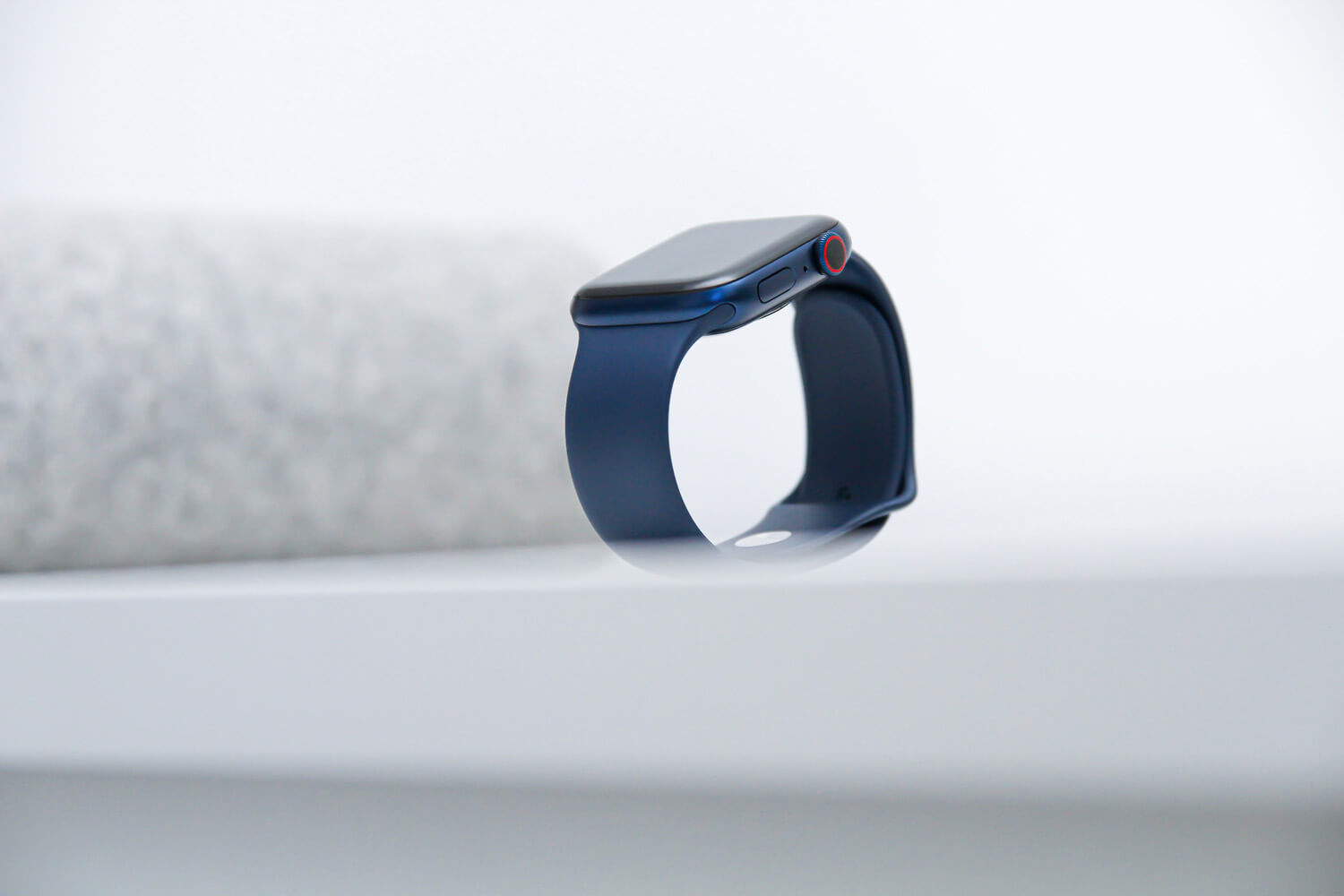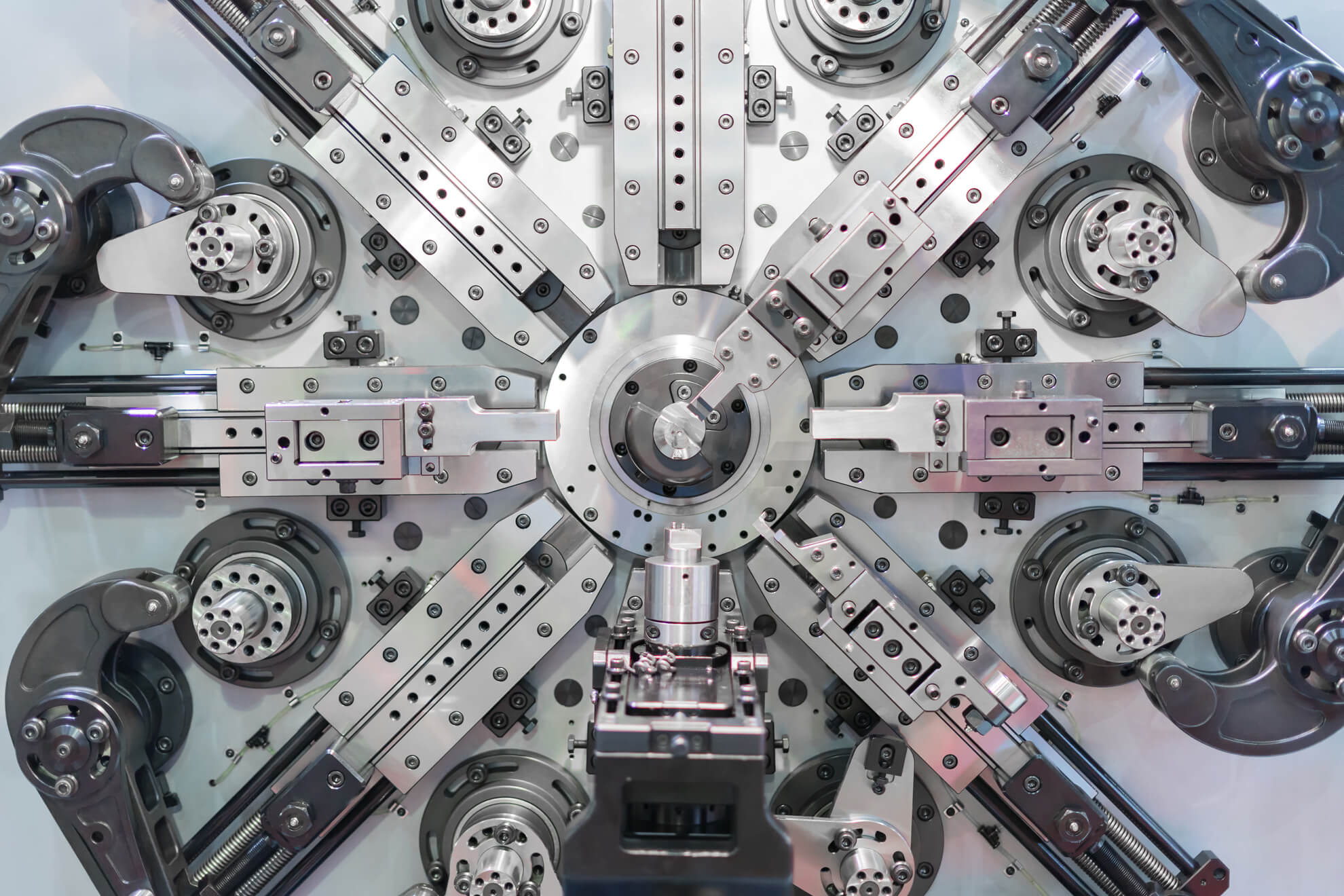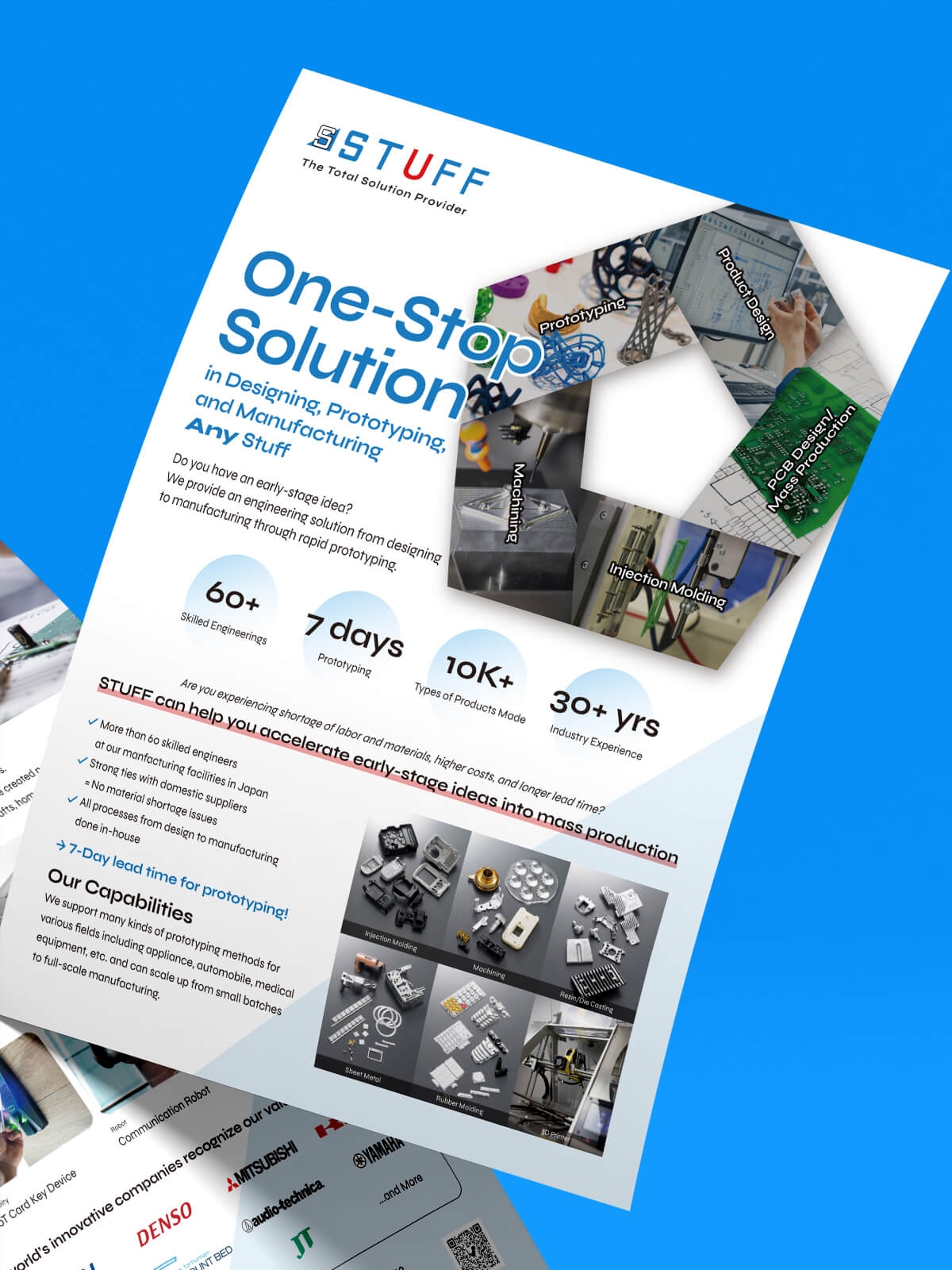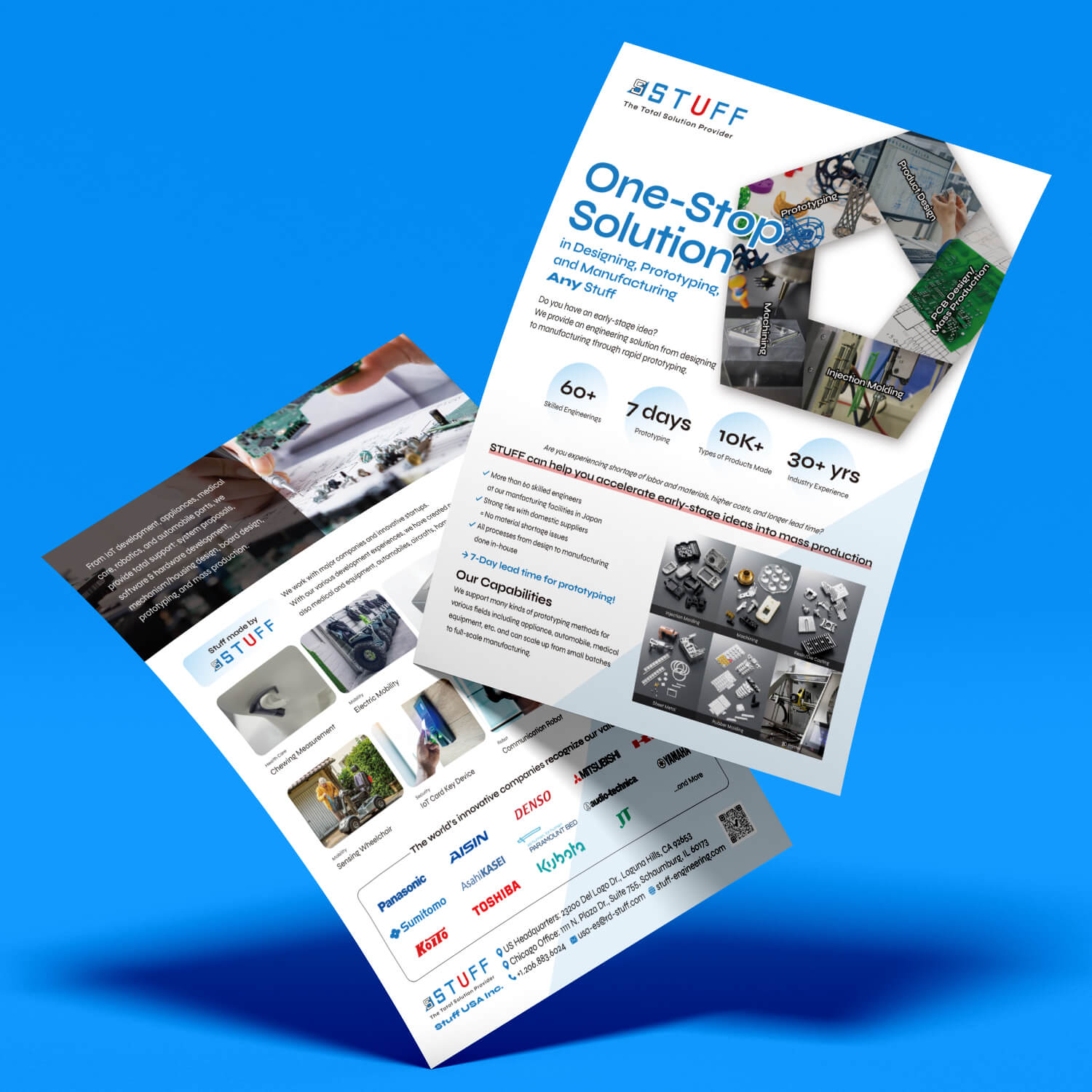December 1, 2023
Rapid Prototyping for IoT Devices: Challenges and Solutions
POSTED BY
Team STUFF USA
Step into the domain of IoT device development, where precision and innovation converge. In this intricate voyage from conceptualization to market integration, rapid prototyping emerges as a vital facilitator—a systematic process that turns concepts into tangible realities.
Rapid prototyping stands as the linchpin in the development cycle, facilitating the transition from abstract concepts to functional prototypes. It is a method designed to streamline the iterative process, allowing developers to visualize, refine, and validate their ideas with efficiency.
As you navigate the process of rapid prototyping, think of us as your partners. We’re here not just to solve challenges but to turn them into opportunities for improvement. The hurdles we face are not roadblocks; they’re steps in the journey toward making your IoT device the best it can be.
In our exploration of rapid prototyping for IoT devices, we’ll dive into the importance of this process without getting lost in technical jargon. Our goal is to make sure you understand the significance of each step, helping you see challenges as chances for progress.
The Importance of Rapid Prototyping in IoT Development
In the dynamic world of IoT development, where innovation is the driving force, the role of rapid prototyping cannot be overstated. It serves as the compass guiding developers through the intricacies of fast-paced and iterative projects, transforming abstract ideas into tangible solutions. Let’s delve into why rapid prototyping stands as a cornerstone in the journey of creating impactful IoT devices.
1. Navigating the Fast-Paced Nature of IoT Projects
In the realm of IoT, time is of the essence. Rapid prototyping becomes the accelerator, allowing developers to keep pace with the industry’s swift evolution. The iterative nature of IoT projects demands a tool that can swiftly bring ideas to life, allowing for quick assessments, adjustments, and improvements. With rapid prototyping, developers can seamlessly navigate the high-speed currents of IoT development, ensuring that their solutions stay relevant and effective.
2. Refining Concepts through Prototyping
At the heart of innovation lies the need to refine and enhance initial concepts. Rapid prototyping is the craftsman’s table where raw ideas take shape and evolve. Instead of relying solely on theoretical models, developers can physically interact with prototypes, gaining a tactile understanding of their design. This hands-on experience is invaluable, providing insights that go beyond what can be conceived on a drawing board. Through this process of refinement, the gap between imagination and reality narrows, ensuring that the final IoT device aligns closely with the initial vision.
3. Validating Functionality for Real-world Impact
An idea, no matter how brilliant, only truly shines when it meets real-world challenges. Rapid prototyping serves as the litmus test for functionality, allowing developers to validate their concepts in a practical setting. By creating prototypes that mirror the anticipated final product, developers can identify potential flaws, optimize performance, and ensure that the IoT device functions seamlessly in its intended environment. This validation process is not just about avoiding pitfalls; it’s about guaranteeing that the product makes a meaningful impact in the hands of users.
4. Empowering User-Centric Development
Rapid prototyping places the user at the center of the development process. By fostering a user-centric approach, developers can gather feedback early in the development cycle, ensuring that the end product aligns with user expectations. This engagement with real users during the prototyping phase enables adjustments that cater to practical needs and preferences, ultimately resulting in an IoT device that is not just technologically advanced but also user-friendly.
In essence, rapid prototyping is the compass that guides IoT developers through the intricate landscape of innovation. It’s not merely a step in the process; it’s the essence of turning visionary ideas into impactful solutions. As we embark on this journey of IoT development, let’s recognize rapid prototyping as the tool that transforms concepts into reality, ensuring that each iteration brings us closer to a future where IoT devices make a genuine difference in the lives of users.

Unique Challenges in Rapid Prototyping for IoT Devices
In the intricate world of IoT development, rapid prototyping is not without its unique set of challenges. As we venture into the heart of these complexities, let’s explore the user-focused aspects of miniaturization, connectivity, power management, and sensor integration. Here are some unique challenges in rapid prototyping.
• Designing Compact IoT Devices
In the realm of IoT, where devices are becoming increasingly integrated into our daily lives, the challenge lies in crafting technology that seamlessly fits into our environments. Miniaturization is more than a technical hurdle; it’s about ensuring that IoT devices are unobtrusive, user-friendly, and aesthetically pleasing. Users want technology that enhances their experiences without adding bulk or complexity.
To address the challenge of miniaturization during rapid prototyping, we employ innovative design methodologies that prioritize functionality without compromising form. User-centric design thinking guides us to balance size constraints with performance, ensuring that the prototypes not only meet technical specifications but also align with user expectations. Iterative testing allows us to refine the form factor, ensuring the final product seamlessly integrates into the user’s lifestyle.
• Establishing Seamless Connectivity
IoT devices thrive on their ability to connect and communicate seamlessly. However, creating a communication infrastructure that is both reliable and user-friendly poses a significant challenge. Users expect their devices to effortlessly sync with other smart technologies, making connectivity a critical aspect of IoT development.
During rapid prototyping, our focus on user experience extends to ensuring that connectivity is intuitive and reliable. Through iterative testing, we identify and rectify potential communication bottlenecks. Prototyping allows us to simulate real-world scenarios, ensuring that the IoT device maintains a stable connection under various conditions. By proactively addressing communication issues during prototyping, we guarantee a user experience where connectivity is a seamless and integral part of the device’s functionality.
• Optimizing Power Consumption
In a world driven by mobility and sustainability, power management is a critical challenge in IoT device development. Users demand devices that are energy-efficient, providing long-lasting performance without the constant need for recharging. Balancing functionality with power consumption becomes a delicate dance, requiring strategic solutions.
During rapid prototyping, our commitment to user-centric development extends to optimizing power consumption. We employ advanced energy-efficient components and innovative power management strategies. Prototypes undergo rigorous testing to ensure that the device delivers optimal performance without compromising battery life. By addressing power management challenges during prototyping, we guarantee IoT devices that align with user expectations for sustainability and reliability.
• Integrating Various Sensors
Sensors are the eyes and ears of IoT devices, enabling them to perceive and interact with the environment. However, integrating a variety of sensors introduces the challenge of harmonizing diverse technologies into a cohesive whole. Users expect accurate and reliable data from these sensors, making seamless integration a crucial aspect of IoT development.
During the prototyping phase, our approach to sensor integration is rooted in meticulous testing and validation. Prototypes are equipped with an array of sensors, and user scenarios are simulated to ensure accurate data capture. This iterative process allows us to fine-tune sensor functionalities, addressing potential conflicts and ensuring that the final IoT device provides users with precise and meaningful data. Through prototyping, we turn the challenge of sensor integration into an opportunity to create devices that enhance user experiences through accurate and reliable data collection.
Upcoming Trends in Rapid Prototyping for IoT Devices
• Dynamic Materials for Enhanced Prototypes
The future of rapid prototyping holds the promise of dynamic materials that go beyond traditional constraints. Imagine prototypes that not only mimic the final product in form but also adapt to user interactions. Materials that respond to touch, temperature, or even environmental conditions during the prototyping phase, providing a more realistic and immersive user experience.
• Integration of Artificial Intelligence (AI) in Prototyping
AI is set to revolutionize rapid prototyping for IoT devices. Imagine prototypes that learn and evolve based on user feedback, automatically adjusting features and functionalities to align with user preferences. AI-driven prototyping will not only accelerate the design process but also enhance the adaptability of IoT devices, ensuring they cater to the unique needs of individual users.
How Emerging Technologies are Shaping the Future of IoT Device Development
1. Edge Computing for Real-time Processing
The future of IoT devices is moving towards real-time processing, and edge computing is at the forefront of this shift. With edge computing, the processing of data occurs closer to the device rather than relying solely on cloud servers. This not only reduces latency but also opens doors for more responsive and efficient IoT devices that can seamlessly adapt to user needs.
2. 5G Connectivity for Unprecedented Speed
The arrival of 5G connectivity is set to redefine the user experience with IoT devices. Faster and more reliable than its predecessors, 5G opens avenues for high-speed data transfer, enabling IoT devices to communicate and exchange information at unprecedented speeds. This not only enhances the responsiveness of devices but also paves the way for new applications and functionalities.
3. Augmented Reality (AR) in Prototyping Visualization
Visualizing prototypes is a critical aspect of rapid prototyping, and the integration of augmented reality takes this to the next level. Imagine being able to interact with a lifelike holographic representation of your IoT device prototype. AR in prototyping not only enhances the visualization process but also allows users to experience and provide feedback on the design in a more immersive manner.
Conclusion
In the dynamic landscape of IoT development, the journey from concept to innovation is shaped by the transformative power of rapid prototyping. As we navigated challenges such as miniaturization, connectivity, power management, and sensor integration, each obstacle became a stepping stone toward user-centric solutions. Through the iterative process of prototyping, we forged devices that not only meet but exceed expectations, ensuring that the end product seamlessly integrates into the user’s life. Rapid prototyping emerges not just as a methodology but as a commitment to faster innovation, user-centric design, and the reliability and adaptability that you, the user, deserve. As we step into the future, envision IoT devices that are not just technologically advanced but essential companions, enhancing and simplifying daily experiences. Welcome to a future where your connection with technology is not only seamless but also profoundly transformative.




